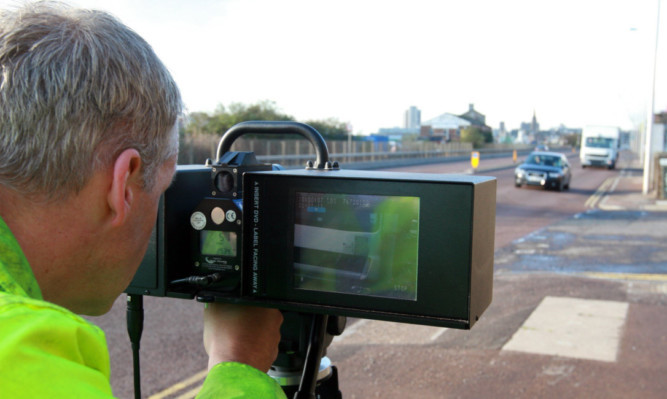Nearly 2,500 drivers have been caught by speed cameras in Dundee in just 10 months.
New figures reveal 2,445 motorists were caught speeding in Dundee by mobile safety cameras between April 1 last year and February 17 this year.
That means nearly the same number of people have been caught so far in the past year as the number who were caught over the whole of 2013-14.
Claire Armstrong, founder of Safe Speed, said mobile camera units do not result in a reduction in the number of accidents.
She said: “The vast majority of people will tell you that they have become money-making machines and that is what they are.
“We want to see them removed from the road. We want to see more police officers and more traffic patrols stopping drivers who are driving recklessly, driving dangerously or driving under the influence.
“Pointing a camera at people and saying you are over the speed limit by a few miles an hour does not mean you are stopping dangerous drivers.
“You don’t see any change in the number of accidents because accidents happen by random chance.
“A lot of people will also use alternative routes when they know the road is starting to become littered with camera vans.”
The Tayside Camera Safety Partnership (TCSP) posts mobile units at more than 20 locations in and around Dundee with “a history of excessive speeds, collisions and casualties”.
Main routes, including the A90 and Kingsway East, are regularly covered, as well as local authority roads such as Broughty Ferry Road and East Dock Street.
Offenders are either issued with a conditional offer of a fixed penalty or reported to the procurator fiscal for prosecution.
During 2013-14, 2,485 drivers were caught speeding by mobile cameras across Dundee.
Neil Greig, director of policy and research at the Institute of Advanced Motoring, said the cameras were “effective”.
But he added: “If there is a problem with a certain road, whether it has a history of accidents at a bad corner or at a set of lights, then they should be looking at a long-term solution.
“Councils need to look at ways of sorting out the problem properly by re-engineering the roads.
“The ideal camera catches nobody because people understand why it is there and slow down.
“They should be measured in terms of how few people they catch rather than how many.”
A spokeswoman for Police Scotland said: “Speed is a key contributory factor to the seriousness of road accidents and the level of injury sustained.
“The siting of mobile safety camera enforcement locations is closely linked to a casualty reduction programme and the approval for any particular camera site is based on accident data including the number of personal injury collisions (PIC) and the number of persons killed or seriously injured (KSI).
“In almost every safety camera partnership, the deployment of cameras has had a positive effect and contributed to both the number of PICs and the KSI statistics being reduced.”
